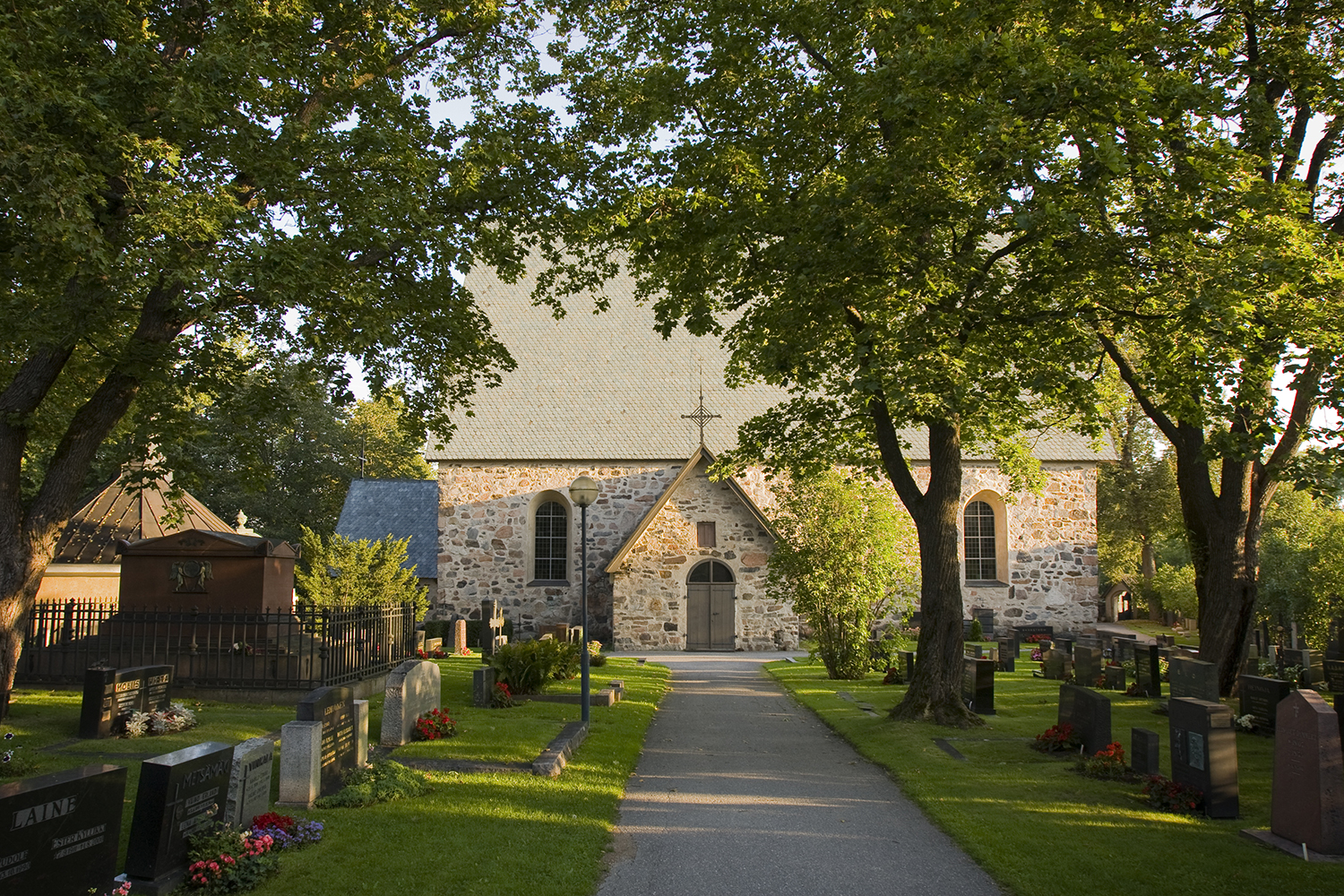Cookies
CookiesThe link opens in a new tab
St Catherine's Church represents old medieval church building tradition. Although it wasonce completely destroyed and has undergone several renovations, it has preserved something of its original appearance and retains the basic plan of a medieval Finnish church.
There is no written record of the rise of the parish of St Catherine, but the first mention of it is from the year 1309. The parishes of St Catherine and St Mary had grown up, at about the same time, near the mouth of the River Aura, on the opposite sides of it. The islands of Hirvensalo and Satava, now part of Turku, also belonged to these parishes at one time, but later on, as the town of Turku grew up around the river mouth, the old parishes of St Catherine and St Mary had to make way for the expansion of the town. The latest territorial annexation took place in 1939 and resulted in the fact that the church and parsonage of St Catharine are now located within the city boundaries of Turku.
Up until the beginning of the year 1991, not only the municipality of Kaarina but also the eastern parts of Turku belonged to the parish of St Catherine. Following the municipal boundary, the parish was divided into two in 1991. As a result, the parish within the town area came to be called the parish of St Catherine in Turku. To avoid confusion, however, also the church had to be given a new name. The church was named after its patron saint Catherine of Alexandria, i.e. St Catherine's church. In spite of the change of name, the tradition of the old parish of St Catherine is considered to continue in this parish with the saint of the church and the altar.
The construction of St Catherine's church was begun in the 1340's, the sacristy being completed first and the church later. It was consecrated on 22nd-23rd January 1351 by Bishop Hemming of Turku and Bishop Thomas of Växjö. The sacristy vaults are still decorated with paintings from the 14th century. Less than 50 years after its completion, however, the church was burned and pillaged by a band of Danish pirates and stood empty and ruined for several decades. Not untit 1440 did the interior of the church take the shape it still has for the most part. The church, which originally had two aisles, was converted into a triple-aisled vaulted church, two windows in the eastern end were walled up and a new window was opened in the middle of the gable wall. The shape of the pillars and arches seem to suggest that church builders received influences from the Cathedral of Turku.
In keeping with the traditional ground plan of medieval churches in Finland, the sacristy is on the north side, the armoury on the south. The armoury on the west side was not built until 1697. The church also had galleries on the north and south walls. They were built in 1735 and pulled down in 1926. The most recent renovations was carried out in 1983-84. Practically all the structures and surfaces of the building were renewed, but very few visible changes were made. The medieval stone altar with its side stairs was uncovered and given a new altar table made of limestone. This was the most visible change made during the renovation.
Most visitors to St Catherine's Church receive their first impression of it from the south. The bell tower designed by the Italian-born architect C. E Bassi in the early 19th century, and the crypts of the Frenckell and Winter families blend well with the old grey stone church.
There are two Catherines associated with the history of St Catherine's Church. Originally the altar was dedicated to St Catherine of Alexandria, but as early as the latter half of the 15th century, the memory of Catherine of Siena was visibly honoured in the church.
Memorials to both Catherines are found in the church - wooden statue of Catherine of Alexandria to the right of the window, and a mural painting depicting Catherine of Siena on the left-hand side of the altar window. Both Catherines had a great influence of the life of the Church through their lives and works, around which a rich fabric of legend has been woven. Catherine of Alexandria, who lived at the beginning of the 4th century, was famous for her beauty and learning. In Finland she became the patron saint of cattle and cattleraising. Catherine of Siena, who lived in the 14th century was a sensitive and strong-willed woman, and she is well known in the pious tradition of southern Europe. In Finland St Catherine's is the only church with which her name is associated.

CookiesThe link opens in a new tab